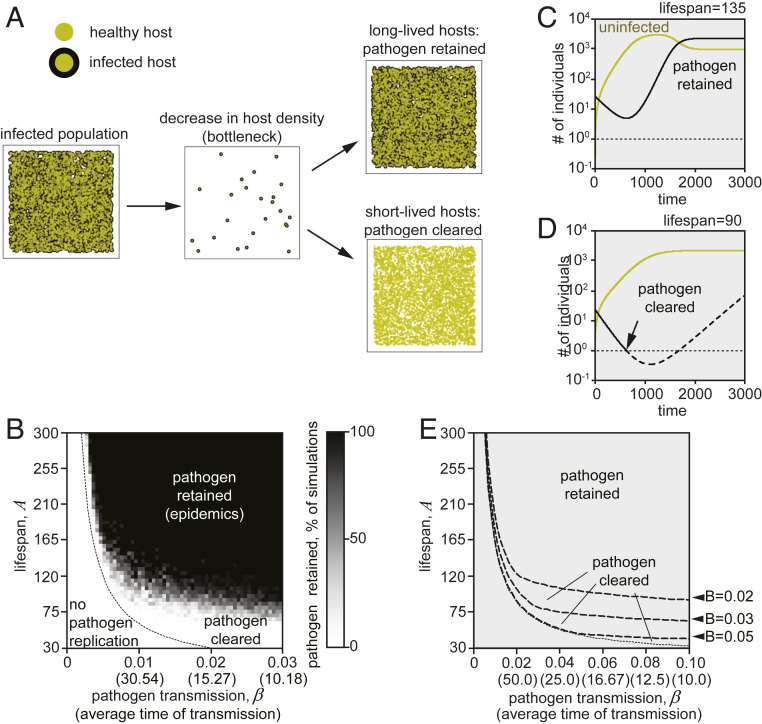Fig. 3.
Model III. Short lifespan facilitates pathogens clearance during critical declines in the host’s density or population bottlenecks. (A) Pathogen clearance after host migration to a new environment. Infected individuals of short lifespan died before the population reached a density sufficient for epidemics expansion. As a consequence, pathogens suffer severe bottlenecking and, therefore, are cleared from the population in the new niche. (B) Stochastic simulation reveals a region where the pathogen is cleared during the bottleneck. Bottleneck size was 25, maximum population number was 5,000, B = 0.05, and the number of replicates per data point was 10. The dotted line limits the domain of the pathogen feasibility as in SI Appendix, Fig. S1 C and D. See also Movie S3 for sample simulations. (C and D) Two examples of a deterministic simulation (Methods). B = 0.02, β = 0.04, bottleneck size was 25, and maximum population number 5,000. (C) A = 135, pathogen passes the bottleneck. (D) A = 90, pathogen does not pass the bottleneck (the number of infected animals goes below 1). (E) Deterministic model prediction of the clearance efficiency at different on A, B, and β. Clearance efficiency decreases with increase in B. Numeric differences between stochastic and deterministic models are due to differences in simulations of infection. See Methods for details.

